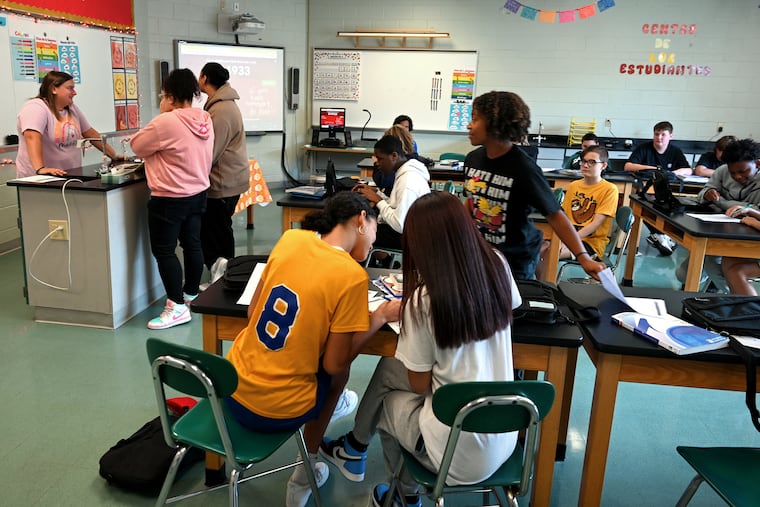Lumberton students have returned to school after mold cleanup. What caused the problem?
Superintendent Colleen Murray said crews have nearly completed remediation and students were able to return Tuesday after a two-hour delay to give teachers time to prepare their classrooms.

Lumberton school district students who shifted to remote learning after mold was found in some classrooms returned to in-person learning Tuesday.
The South Jersey school system moved students from Bobby’s Run School to another building and sent some students from Lumberton Middle School home to learn virtually after mold was found in both schools on Sept. 20.
Parents were told to plan for the possibility of remote instruction for two weeks. However, Superintendent Colleen Murray said crews have nearly completed remediation and students were able to return Tuesday after a two-hour delay to give teachers time to prepare their classrooms.
The Lumberton district has about 1,100 students enrolled in pre-K to eighth grade. It also operates Ashbrook Elementary.
Here’s what to know about the situation.
What caused the mold problem?
Murray said an unseasonably warm spell in September caused the mold, identified as Aspergillus Penicillium. Teachers and custodians are permitted to adjust the air-conditioning settings, and that may have contributed to unstable moisture, she said. The mold was detected after a teacher complained about an odor in her classroom and testing was conducted.
“Our state-approved assessment professionals have assured me that ours is not a systemic mold issue, but rather a temporary problem as a result of the humidity,” Murray wrote in a letter to parents announcing the return to school.
Is Aspergillus Penicillium dangerous?
According to the Centers for Disease Control and Prevention, Aspergillus Penicillium are fungi that generally aren’t harmful to people with a healthy immune system. Prolonged exposure and breathing in the mold spores, though, can cause an infection in the lungs or sinuses which can spread to other parts of the body, especially for those with weakened immune systems.
The district recommends that parents who have medical concerns about their children should consult with their physician.
How many students were affected?
Mold was found in 10 classrooms at Bobby’s Run, an elementary school, and about 250 students were relocated to an area in the middle school not impacted by mold. About 350 students from 16 classrooms at the middle school were placed on remote learning for eight days. One student without wifi access at home was set up for online learning in the library.
What steps were taken to remediate the classrooms?
The district said it hired AllRisk Property Damage which treated the rooms with plastic protector sheets and then cleaned the sealed rooms. Air purifiers were placed in the hallways and operated around the clock until the remediation was completed. Murray said the district would likely use reserve maintenance funds to pay for the remediation, expected to cost about $10,000 per room.
How does the district know it’s safe for students to return?
The district said it hired Hillmann Consulting, a state-approved firm, to conduct testing in the affected classrooms, and the remediation team cleared students and staff to return. The state Department of Health and state Department of Education were consulted. Mold reports for every classroom have been placed on the district’s website.
There are still six classrooms and four non-instructional areas still to be remediated. Students will not return to those areas until the rooms are cleared, Murray said. Additional testing will be conducted throughout the complex later this week after the affected rooms have been remediated, she said.
What steps are being taken to prevent this in the future?
Murray said the district plans to clean its air filters every two months, instead of the current practice of every three. It will also remove porous materials from classrooms that could cause mold spores. The facilities department will also better regulate the AC systems and use a more robust reporting systems for classroom temperature changes that may require an adjustment, she said.